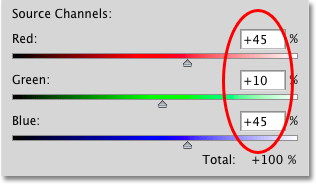Me and My Movies
Films can impact peoples lives. Audiences respond to films and give their reactions in multiple ways.The audience can greatly affect the film, too. Increasing its longevity of its popularity and status in our culture.Genre - Action
As one of the main genres for Film and TV, the action genre is usually a big-budgeted production, featuring chases, battles, fights, and adventurous, often two-dimensional 'good-guy' heroes (or recently, heroines) battling 'bad guys' - all designed for pure audience escapism. They include the James Bond spy/espionage series, and some superhero films. One sub-genre to this is the disaster film.
Action is personally one of my favorite genres. It can span into a wide variety of ideas, and - if these ideas work - can produce incredible films.
Active Spectatorship
Active Spectatorship is the theory that each viewer is different. These active spectators are less susceptible to marketing, and will question and react to the film; such as the genre, narrative and camera work.Passive Spectatorship
Passive spectatorship is the theory that all audience is the same, and they do not effect the reception of the film.Some film makers try to turn their audience into passive viewers: filling their films with obvious and ambiguous preferred readings, by encoding meaning using music, lighting and any other film techniques, to try get as much agreement into the audience, so that they can only think one thing.
Other film makers encourage active spectatorship, by making their films more open to interpretation.
Why Watch Films?
Films are watched for pleasure. The Uses and Gratifications theory suggests that there are main pleasures that audiences gain from films.
Diversion
Audiences watch a film to be diverted from their own life. This is the most common reason to watch films. Films watched under this influence usually have an easy to understand story line, in which 'good' has a tenancy to triumph over evil.
This type of pleasure provides audience with emotions they may not feel in their usual lives. (E.g fantasy - Narnia, Harry Potter, ect.)
Personal Relationships
Audiences may watch a film as a substitute for a personal relationship. For instance viewers might choose to see a Rom-Com because they are single.
Films that are about groups of friends may help audience feel like they are part of that group.
This type of pleasure may also apply to TV shows more than Films. Soap operas being one example.
Surveylance
Audience can watch a film for its useful information. Factual Film making and Documentaries being their major watch.
They may also watch 'world cinema' to receive insight on different cultures of the world.
This could also be considered as escapism/diversion.
Frameworks of Interpretation
We we all made up of our past experiences, birthrights and current standings. Things such as age, class, ethnicity and education all make us individuals. This is considered as our Frameworks of Interpretation.
For example, I could be a young white British man who has been through higher education and is middle class. All these factors such as my age, my class, my ethnicity, my education and even my past experiences will all have some bearing on the way I read and interpret a film. Though I might agree with many other people, there could also be differences. For example my interpretation of a film might be very different to that of an older generation, or someone of different culture.
The individual above may have just seen Avatar, and walk away from it, thinking that the basis of Avatar was all about a so-called ‘primitive’ species of aliens that taught a human that he should be more respectful of his surroundings and nature and the environment. Others may criticize it for portraying the aliens as savages, and for the use of African-American and Native American actors in the roles of the aliens could be seen as highly racist.
Media Literacy
If an individual has been educated about the media, and are highly aware of how media texts are constructed, then they are likely to suffer an impact to their enjoyment and interpretation of films.
A viewer who is more media literate will likely be aware of what the film is aiming to display, and therefore be less suggestive to its attempts.
For example, some viewers will not enjoy fantasy films as much as others, as they are overly aware of how certain special effects are made, thus ruining part of the films natural vibe.
Intertextuality
Intertextuality is the use of referencing one piece of media into another. Parodies and Spoofs of other films - like Scary Movie - deliberately place references into their films, like Scream or The Ring.
This is also often the case with genre films and the use of stars. This is less deliberate and sometimes unavoidable.
Fandom
Although films can have an effect on their audience, the audience can have a great impact on their chosen films.
Fans display their love for the film in many ways. Conventions like attending Comic Con, an event that lets fans of many different Fandoms dress up and socialize. Writing Fan-Fiction, fans may have their own story they want to tell, featuring their favorite characters from films.
Making/Buying and wearing Cosplay, clothes that match the same as characters in films. Also producing other merchandise, too.
Making websites for their films, too, or creating a blog dedicated to their chosen film.
































